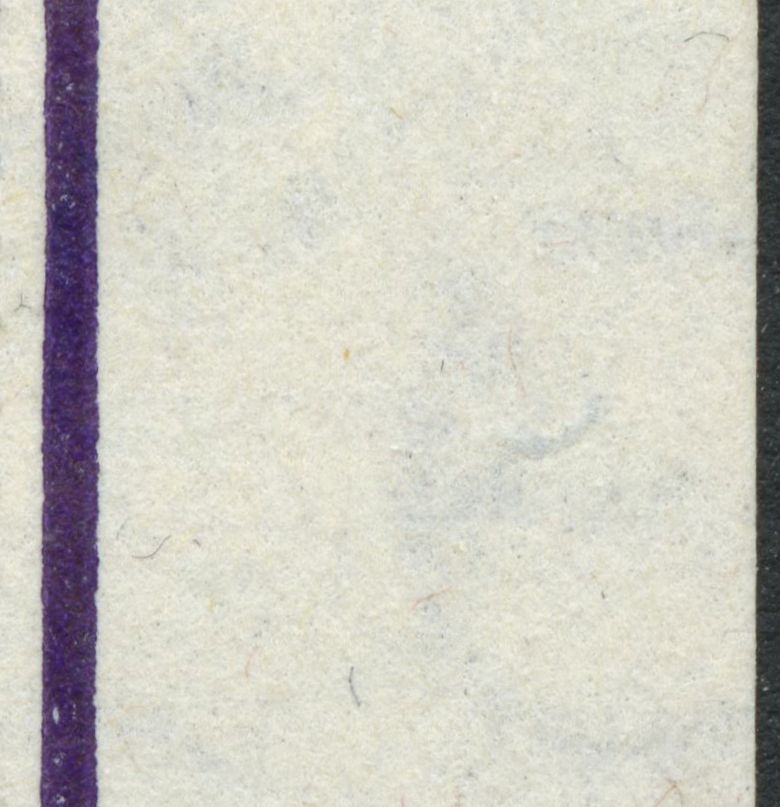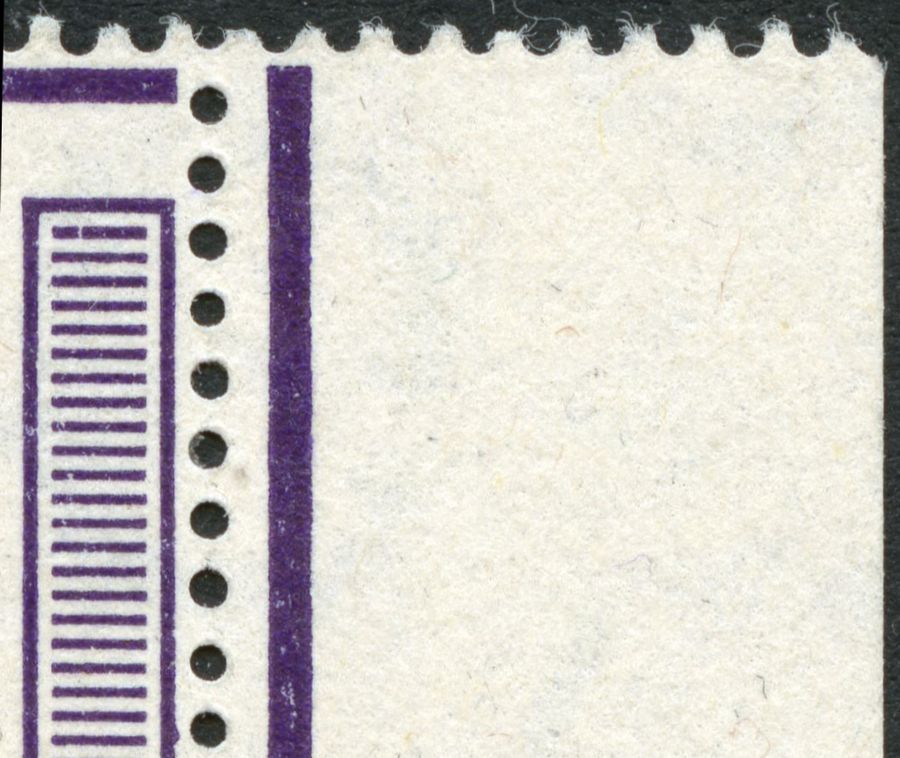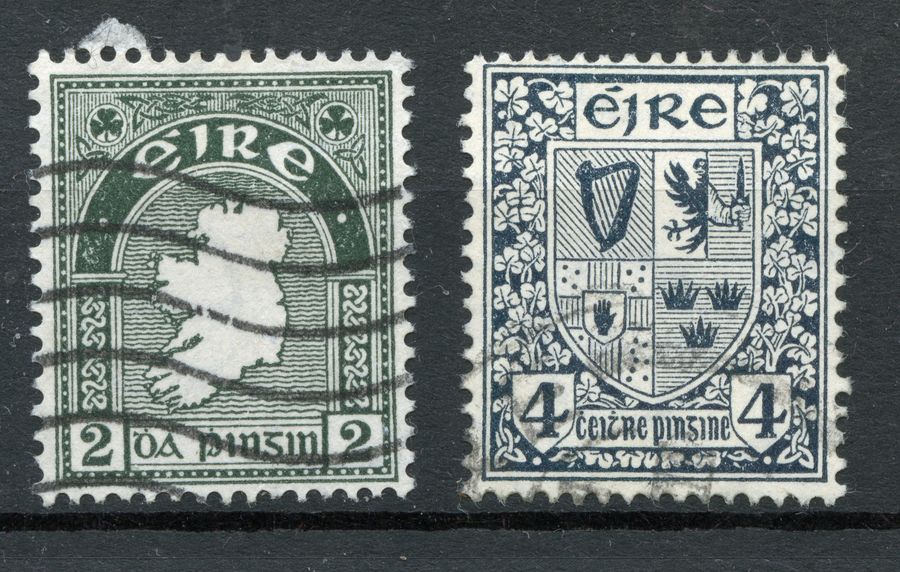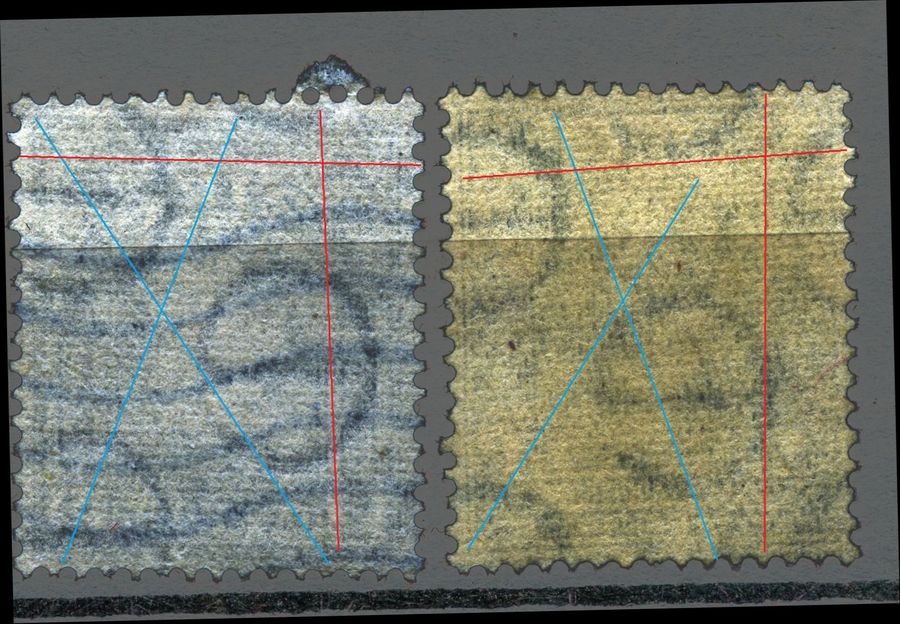The 1922 definitives of Ireland lasted for some 45 years in which quite naturally various types of paper [and watermarks] were bound to be used.


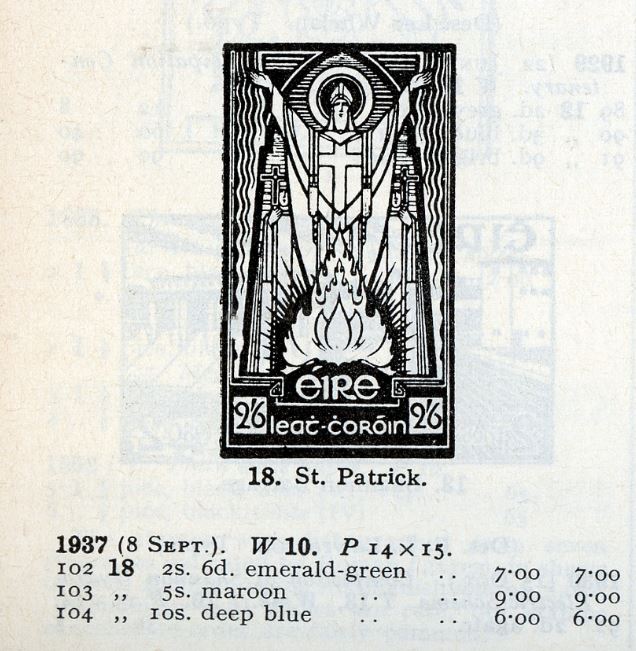
Only one watermark that was sideways in certain cases...
No tear and wear - just 3 [or 4] different size/shapes of the "e" watermark!


The second stamp shows very clearly the twill binding of the sieve of ther papermachine!
Twill bindings are asymmetrical - the steepest of the diagonals goes downwards [judging from left to right]
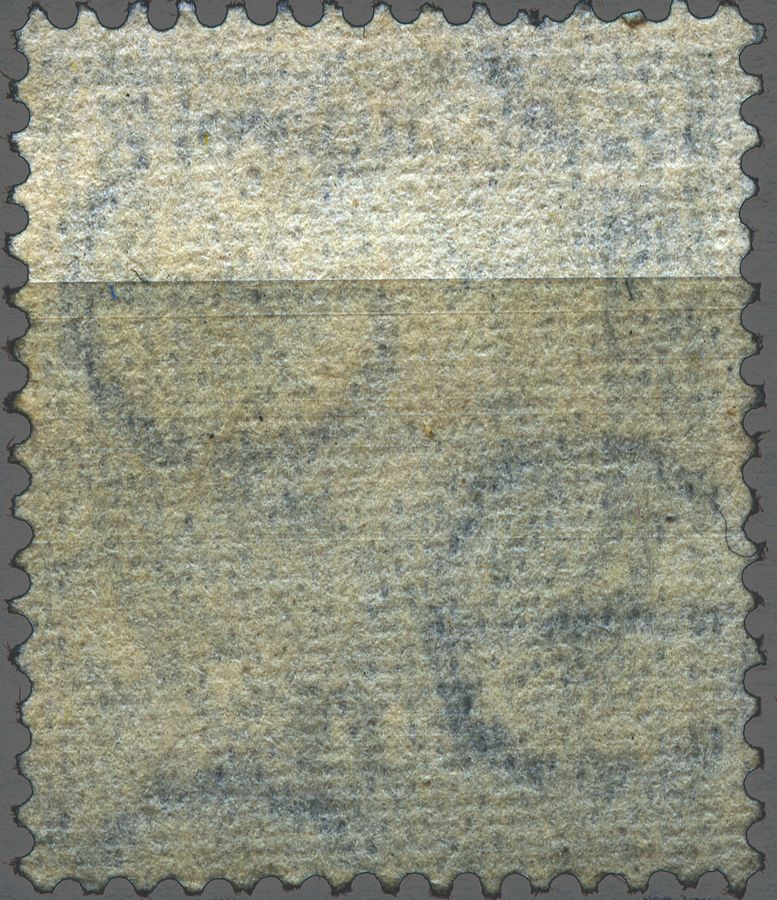
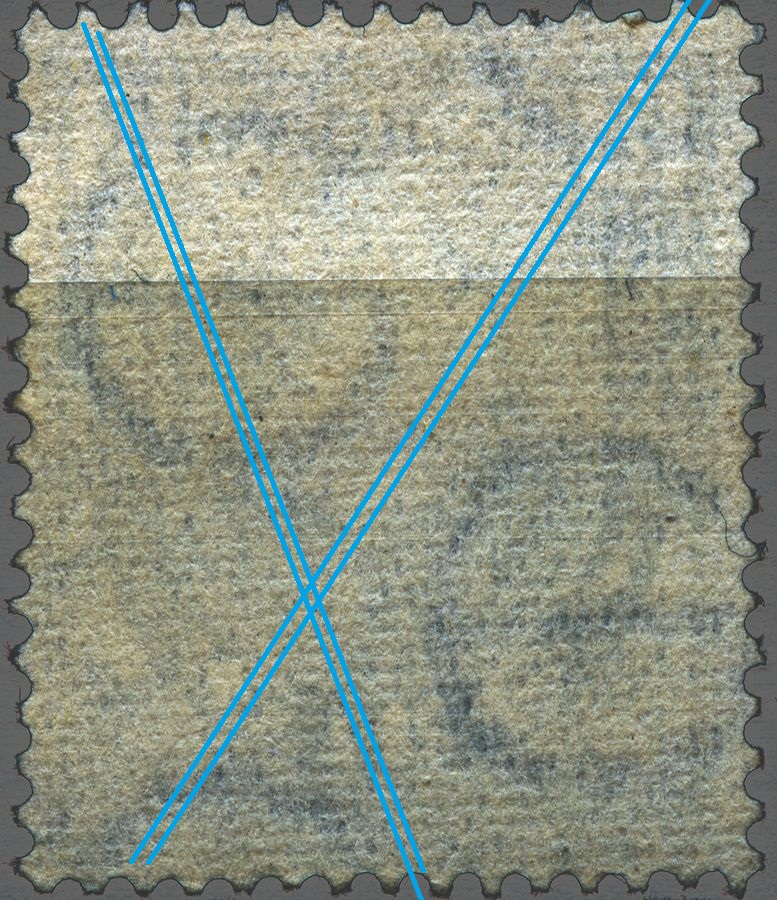
The mirrored version we will meet in this series as well :) If you do not see what the blue lines refer to!
Turned 60 [57] °s clockwise:

Turned 70 [68] °s anti-clockwise:
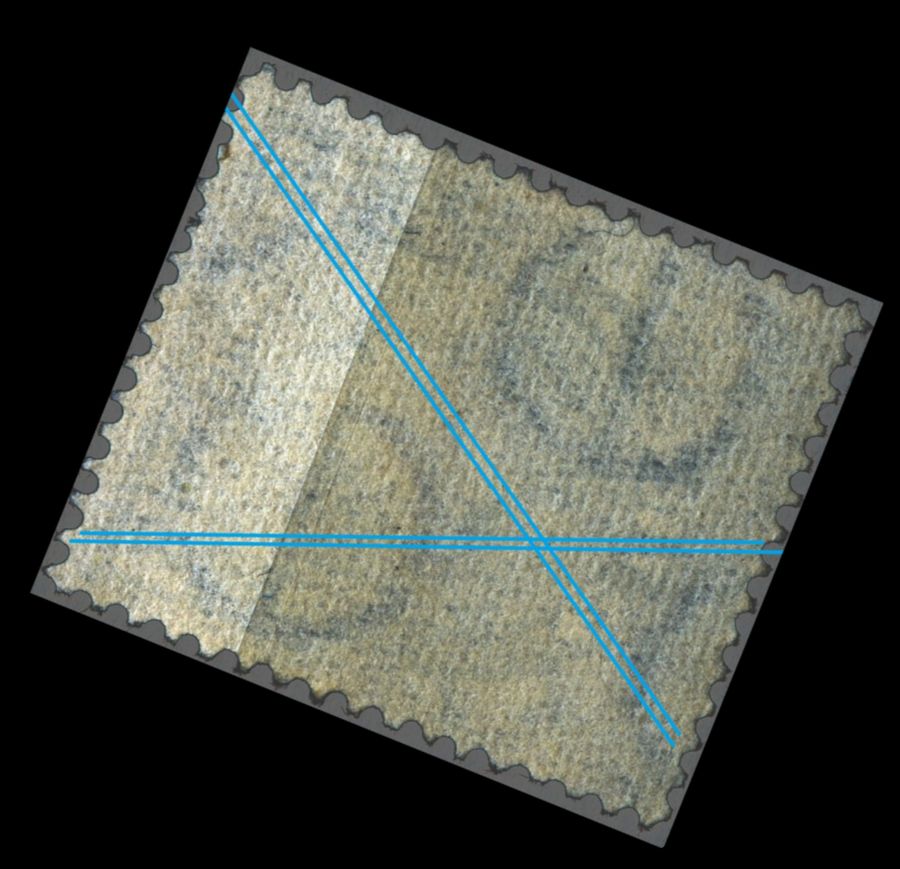
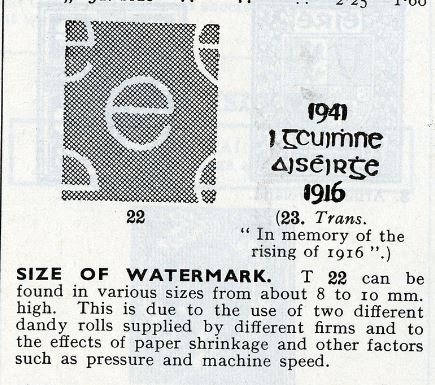
How can a respectable firm such as Stanley Gibbons claim such rubbish????
Different dandy rolls? OK, but just two?
Shrinkage, pressure and machine speed?
Why not in the 1922-1940 period with likely lower comfortable conditions?!

The two in the middle show different heights and shapes!
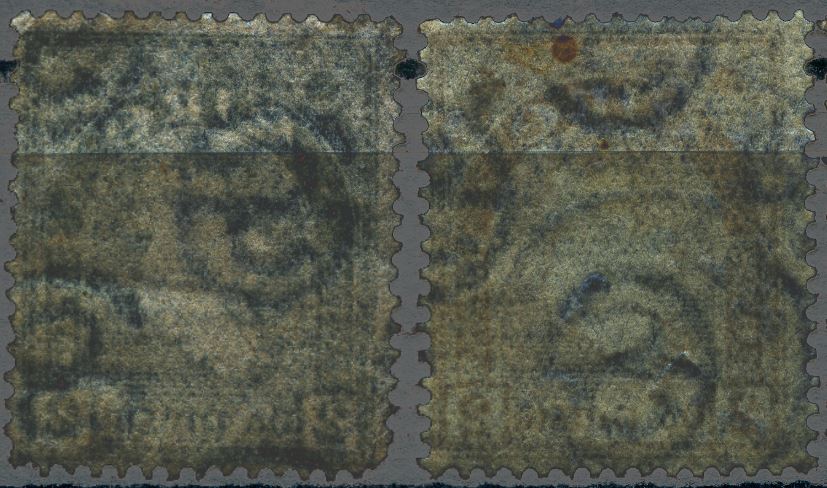
Also later on - the "e" watermark - we can observe differences WITHIN a single stamp:

As to the colour of the papers, Murray Payne mentions the "cream paper" for just the "e" watermark.
But the 6d is always different!!! Not as far as the front of the stamp but for the back!
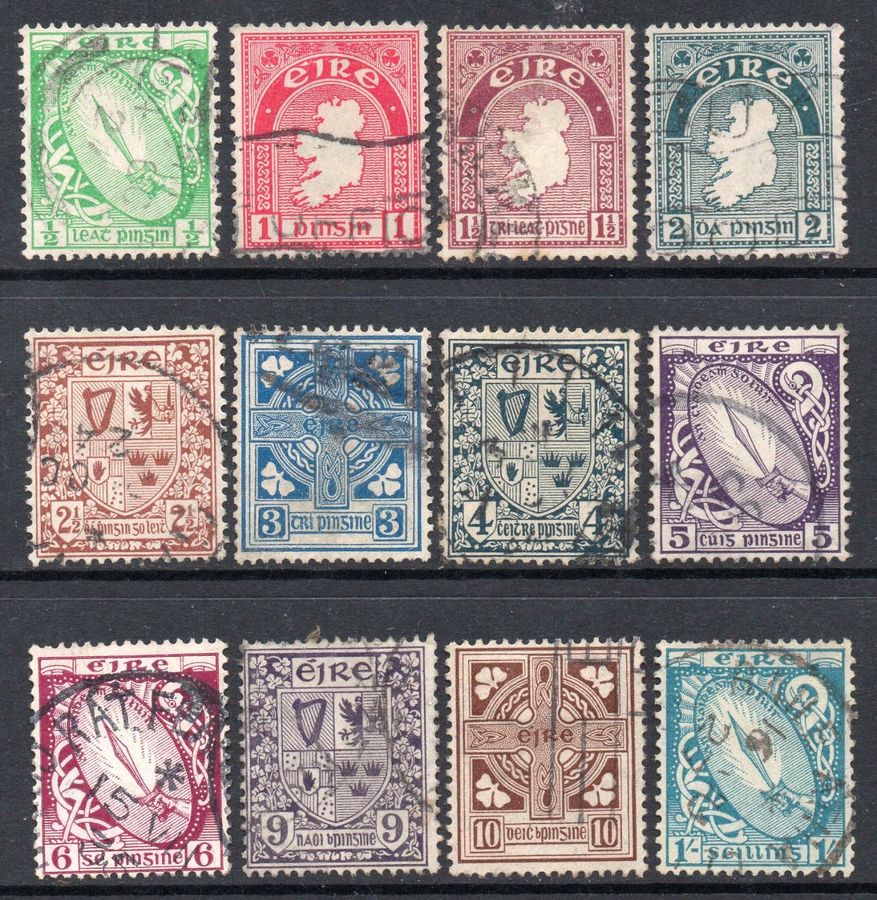
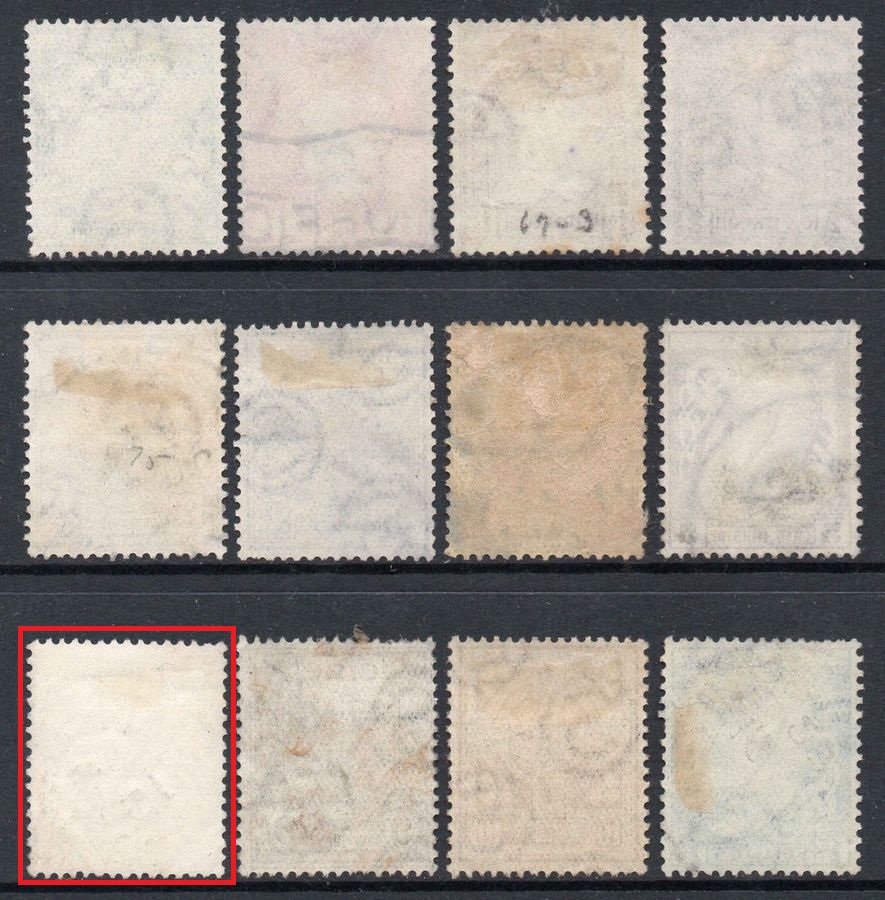
The watermark of the 6d seems almost invisible!
Mint stamps with different colours of the papers or so it seems!

And still the watermark of the 6d hardly visible!
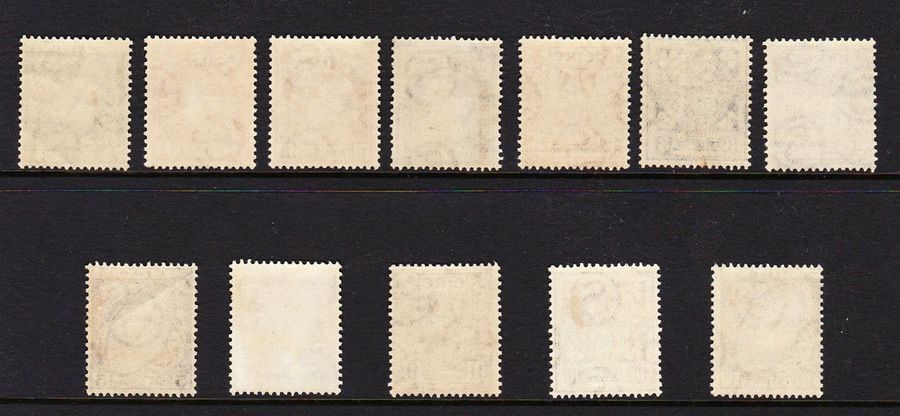
Which one is the 6d???
According to Murray Payne stamps also occur with inverted watermark!
How can you tell???
In especially the 6d????
On Ebay
https://www.ebay.co.uk/itm/IRELAND-1923-d-Bright-Green-VARIETY-INVERTED-WATERMARK-SG-71w-VFU-/311940675004

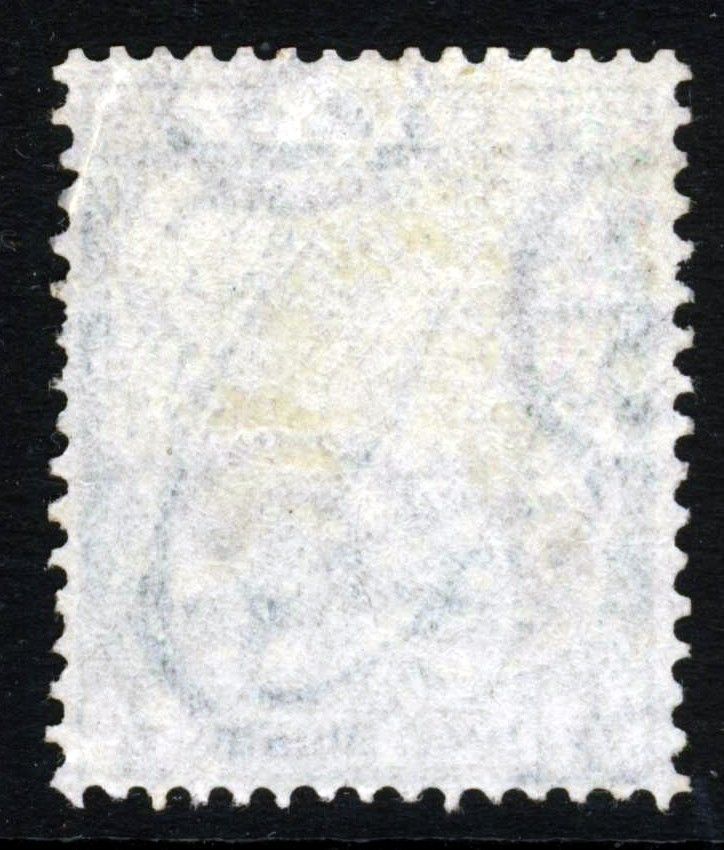
But is this really inverted???? The "S" normally has a bit larger lower half. Judging by the damaged teeth the turn-over is peculiar?
Or has the stamp been turned over along a horizontal axis??
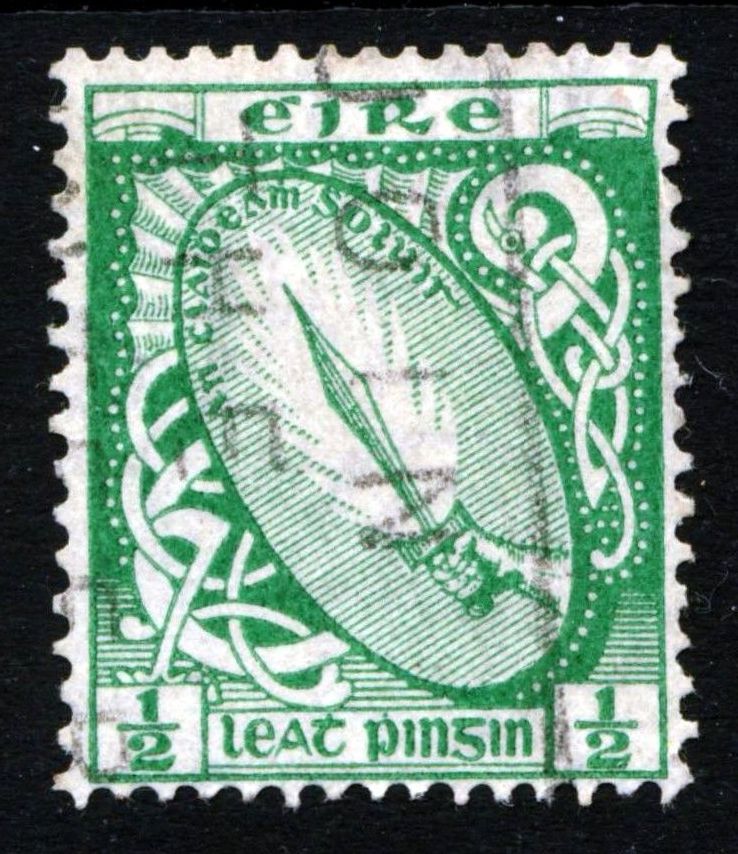

[quote="peterh"]Rein - your scan of the SG listing is very very old!
The statement in the current catalogue is the same about the dandy rolls. The inverted watermarks are all now listed in SG.
Chalky paper is now termed chalk-surfaced paper and the comment about it only responding to the chalky test has been removed.
The cream paper 6d is not there, just the comment after the 1940-68 issue about a wide range of shades and also variation in paper in the issue generally.
Perhaps the 6d [b]only[/b] exists in cream paper whereas the other values are found with different papers.[/quote]
Peter,
Thanks!
The SG British Commonwealth is from 1971, the Murray Payne is the latest I presume...
Does SG tells us what the different papers are?
Rein
The original watermark "SE" with or less the same size circles/ovals!?
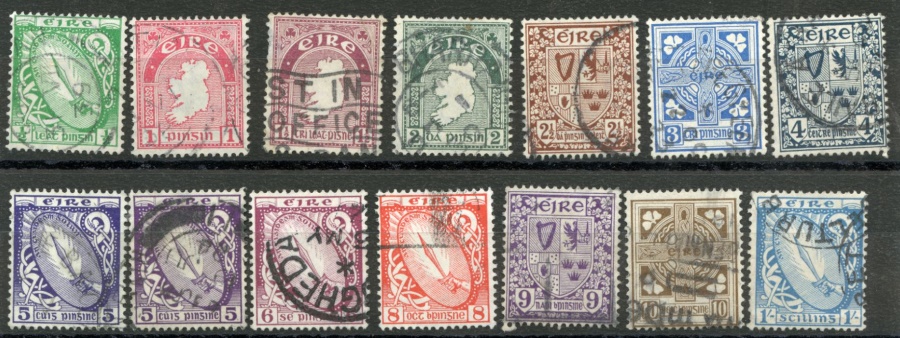
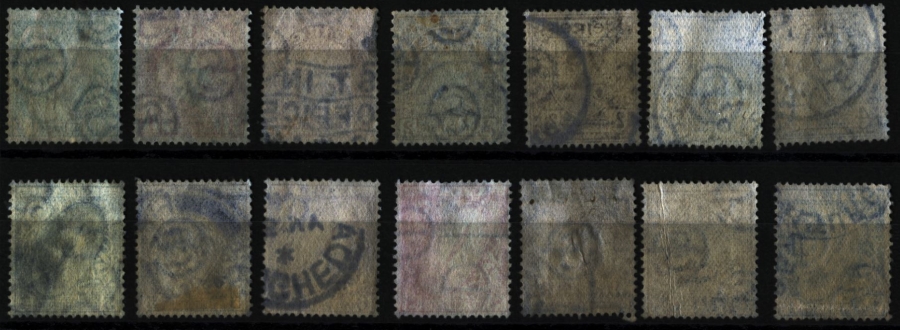
[quote="Erinmania"]Recent research by others in the National Archives in Dublin has found the following information regarding Dandy Rolls used in conjunction with the definitive stamps of Ireland
The maker of the first Dandy Roll in connection with the SE wmk is unconfirmed but could possibly be Edwin Amies & Son of London who manufactured the later e watermark dandy rolls.
In 1933 an order was placed with a German firm Maschinenbau, Werkstatte, Niefern, Germany for the SE wmk Dandy Roll. There were however considerable problems with the Dandy Roll supplied. It is minuted " Care shoud be taken to ensure that the Dandy Rolls are made specially to suit the weight of paper in the manufacture of which they are to be used. Rolls suitable for heavy papers will give very unsatisfactory results with the papers which (are required). The Dandy Roll now in use (the German one) was not made for thin paper. The letters are too high and cut deeply into the paper, and its excessive weight is a principal cause of the troubles we have had from defective watermarking for the last few years ". The minute was written in 1938 prior to the placing of an order for the e watermark Dandy Roll.
Consequently in 1938 an order was placed with Edwin Amies and Son for the e watermark Dandy Roll even though the quotation was at a higher price than the German firm . Subsequent documents indicate that further orders for new Dandy Rolls with the e watermark were placed in 1949 and 1958 with the same company. So far no dimensions or specific requirements of manufacture of the Dandy Rolls have come to light.[/quote]
[quote="Erinmania"]With regard to the se wmk images posted above, the 8d value only exists with e watermark.[/quote]
Wow, you are a good observer!
Rein
[quote] Consequently in 1938 an order was placed with Edwin Amies and Son for the e watermark Dandy Roll even though the quotation was at a higher price than the German firm . Subsequent documents indicate that further orders for new Dandy Rolls with the e watermark were placed in 1949 and 1958 with the same company. So far no dimensions or specific requirements of manufacture of the Dandy Rolls have come to light. [/quote]
How about different printing houses??
And different printing processes?
Who was the main supplier of stamp paper before 1963???
From 1963 [till 1981?] stamp paper to be used for photogravure must have been completely different for the type of paper used for typography and recess. Recess alone needs a different type of paper than typography!?
Rein [quote] In 1933 an order was placed with a German firm Maschinenbau, Werkstatte, Niefern, Germany for the SE wmk Dandy Roll. There were however considerable problems with the Dandy Roll supplied. It is minuted [i]" Care shoud be taken to ensure that the Dandy Rolls are made specially to suit the weight of paper in the manufacture of which they are to be used. Rolls suitable for heavy papers will give very unsatisfactory results with the papers which (are required). The Dandy Roll now in use (the German one) was not made for thin paper. The letters are too high and cut deeply into the paper, and its excessive weight is a principal cause of the troubles we have had from defective watermarking for the last few years "[/i]. The minute was written in 1938 prior to the placing of an order for the e watermark Dandy Roll. [/quote]
This means we should be able to tell the pre-1933 watermark from the post-1933 watermark!
Did Irish philatelist find such differences???
Rein
[quote] To make things much more complicated! Most watermarks in stamps were made by using a dandy roll that usually made a faint impression on the felt side of the paper - the wire side of the paper mostly showing the wire structures.
So far I had not seen watermark produced differently but when studying Polish watermarks I was told by Poland's watermark expert Stefan Jakucewicz that the State Printers had used paper coming from a paper mill that had drum sieves [Dickinson type NOT Fourdrinier]! with the watermark design mounted directly to the wire of the drum. This means that BOTH the wire structures AND the watermark can be seen at the same side of the paper! And that NO dandy roll was used...
Quite recently I found Irish stamps that fitted the description: a well visible wire structure at the back of the stamps PLUS the watermark design slightly deeper than the paper surface! You need stamps WITHOUT gumming and then you can easily spot the watermark. No fluids needed! I haven't found out yet how to get this phenomenon visible by scanning... [/quote]
Has any Irish philatelist come up with similar observations????
The German firm still exists!
http://www.mwn-niefern.de Erinmania,
Thank you for giving me information about the Irish stamp production which I do not yet have found. Not so strange as I have just started with Ireland a couple of weeks ago myself.
You present yourself as a non-expert but that looks like an understatement :)
[quote]HI,
Living in the UK, I am a collector of the stamps and postal history of Ireland. My speciality is the modern era especially the "map" definitives from 1922 onwards covering aspects such as papers,printers,inks etc. I have contributed articles to the leading Irish philatelic journals such as "Irish Philately", "The Revealer" and "Die Harfe". By joining Stampboards I am looking forward to expanding my general knowledge of the stamp world and learning from the experiences of other collectors.[/quote]
Rein
Erinmania,
yesterday I put a question about the producers of stamp paper here and apparently you already had placed some of that here:
[quote]
magic7013
[img]http://www.stampboards.com/images/jocke14/irland2pinsinerrorcolar_zps430cb69b.jpg][])
Hello! I found this stamp in a collection I bought! All of the two thousand stamps were in a cigar box,mostly empire stamps! I read on the forum that some pinsin stamps with shading color from green to blue of sunlight,which in these case doesn't feel right!
My stamp has a clear blue color and it has been lying in the cigar box probably several years, maybe newer exposed to sun light! Is it a color error? Is there anyone out there who knows? Any help is welcome! Thanks
ps Anyway it is a beautiful stamp 8)[/quote]
[quote]
Erinmania
Hi, The blue colour is relatively common on used examples mainly dated late December 1922 through till January 1923. Such stamps are widely regarded as colour changelings as no records are known authorising a colour change . The original supplies of the 2d value on DLR paper (DE LA RUE) sold out shortly after issue (FDC are dated 6th December 1922). The colour changeling seems to have occured on the second printing of the stamp. Examples exist in blue when they have been soaked off paper . This may have been as a result of either a change in paper and/or a change in the configuration of the printing ink.. Your example is interesting as it appears to be unused. You do not say if it has original gum or not . Sunlight is also a possible cause of a colour change but I may be wrong but I would suggest that in the intervening 93 years moisture/dampness has caused the change.[/quote]
http://www.stampboards.com/viewtopic.php?f=17&t=35849&p=4587044#p4587044
[quote]
Dani: Can some body please identify the blue stamp in the scan?
I have checked the Stanley Gibbons Commonwealth and British Empire Catalogue (2013) but can't find it, I don't have any specialist references. I've placed it in between the listed colour of grey-green for comparison.

Thanks in advance for any replies.[/quote]
Rein
[quote]
Erinmania
I am no expert but I can tell you that the first printing of the 1922 2d SE watermark stamp issued on 6th December 1922 in colour pearl green ,was on Joynson paper supplied by De LA Rue to the Government Printers in Ireland. Due to the political situation in Ireland at the time, there was a strong desire for all stamp production to be of Irish origin i.e paper,ink etc. A printing in late 1922 carried out in Dublin Castle involved either a change to the paper or a change or trial in a printing ink of Irish origin or a combination of both. The date of your 2d "blue" of February 1923 is significant as nearly all authentic recordings of the used "blue " stamp are between January 1923 and March 1923. Generally the colour change to blue is caused by soaking in water or the effect of moisture vapour but it would be quite feasable for sunlight to effect an unstable ink. The stamp is certainly not an unlisted colour variation. I hope this helps a little.[/quote]
Erinmania,
as the first dandy roll was used by the Joynson paper mill what happened to the dandy roll when other paper mills got involved???
Or was it used only once:
https://en.wikipedia.org/wiki/River_Cray#Joynson's_Mill,_St_Mary_Cray
[quote]Joynson's Mill, St Mary Cray TQ 471 684 This was a corn mill which stood near St Mary Cray church. It was replaced by a paper mill, then a paper factory and in recent years by a warehouse complex.
In 1787 this mill was being run by Henry Brightly. John Hall was the owner in 1816. Charles Cowan was working at the mill in 1819, when the mill had two vats and was producing an estimated 1,500 pounds (680 kg) of paper a week. William Joynson took over in 1834.[8][11] He had previously been at a paper mill in Snodland.[12] Paper produced here bore the watermarks "Joynson Superfine" or "WJ&S" over "St Mary Cray Kent".[13] In 1839, Joynson was granted a patent for watermarking paper produced by machine. The waterwheel was of cast iron construction and may have been overshot, as the head was some 8 feet (2.4 m) to 9 feet (2.7 m).[5] The mill was expanded in 1853, when a second machine was installed, enabling the steam driven mills to produce 25 to 30 tons of paper a week.[7] William Joynson died in 1874 and the mills were left in trust to his two grandsons. One of them, William, drowned in 1875 leaving Edmund Hamborough Joynson as sole heir.[7] Cowan mentions that the mill was producing an estimated 70,000 po unds (32,000 kg) of paper a week in 1878.[7][8] Some 700 people were employed at the mill in 1881 and E. H. Joynson took over the mill in September 1882, expanding it the following year with a new steam engine and machinery.[7] An engraving of the mill in 1891 can be seen here.[4][9] Joynson produced only high quality writing papers.[7] In the late 1890s, a dryer was sold to Nash's and installed in their mill at St Pauls Cray.[14] Edmund Joynson took his son into partnership shortly before World War One. The firm became William Joynson & Son. In 1914, Joynson's paper was used in the first 1 and 10/- banknotes issued by the Bank of England.[7] Edmund H Joynson retired in 1930 and the mills were taken over by Messrs Wiggins Teape & Co. who promptly closed the mills in order to rebuild them. 350 people were made redundant, and only 200 were employed in the reopened factory. The paper factory made greaseproof and vegetable parchment paper.[15] The mill reopened in April 1933 as the Vegetable Parchment Mills (D elcroix) Ltd. The production of "vulcanised fibre" began around 1943. In 1963 the mill was the home of the National Paper Museum[7] The mill closed in 1967 and the paper museum collection was transferred to the Museum of Science and Industry in Manchester.[7][16] [/quote]
Rein
As the Joynson Mills closed down in 1930 and Wiggins Teape re-opened them in 1933, it is plausible that WT had a new dandy roll ordered from from Germany. Wiggins Teape was a major player in stamp paper manufacturing. They supllied the Mint [Casa de Moneda] in Buenos Aires. Argentina with watermarked stamp paper since 1925.
The 1944-1946 linen-binding looks like it was manufactured NOT in Ireland, but - probably - in the UK [WigginsTeape?]
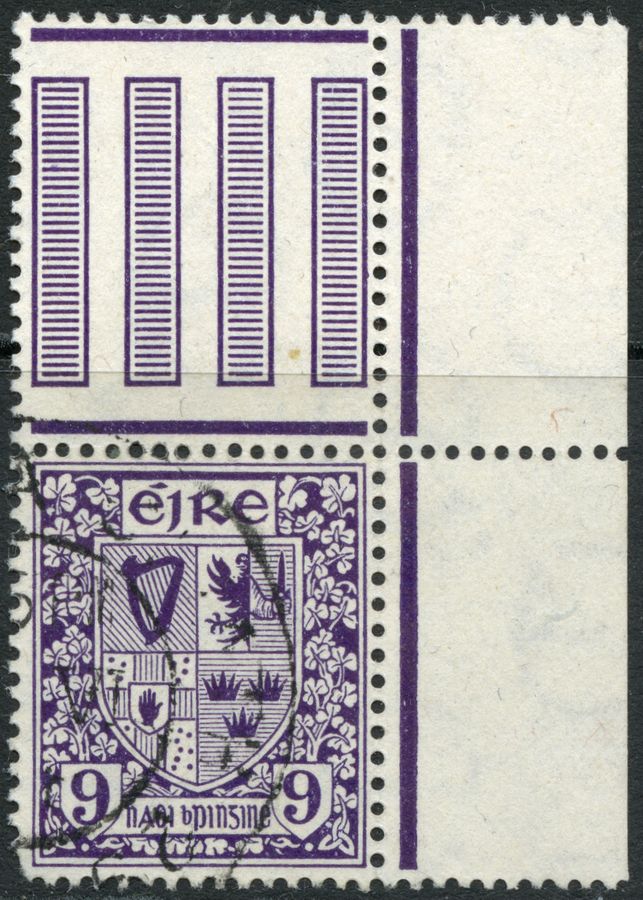
The brown fibers are typical of that period!
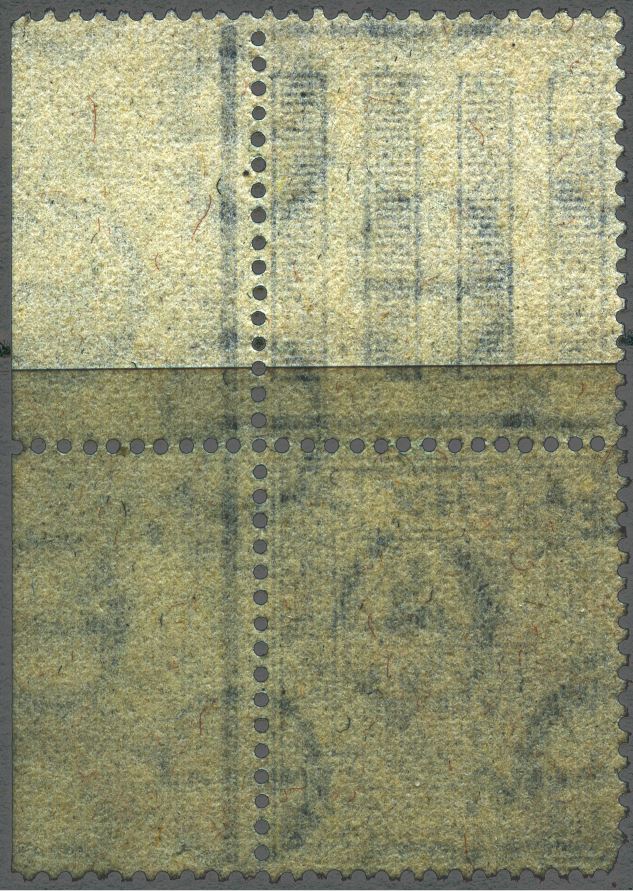
Linen-binding:

The front surface shows the watermark rather than the back!
